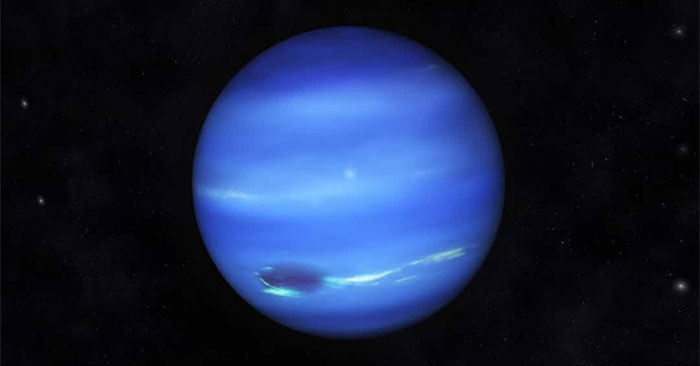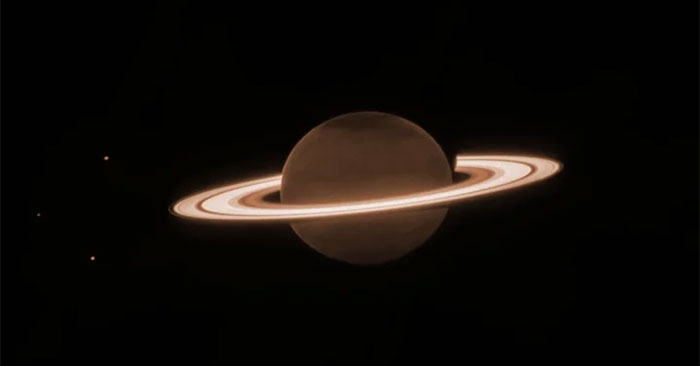James Webb super telescope begins to investigate the mystery of Earth's water source
The origin of water on Earth has long been one of the most controversial questions in scientific circles. Water originates from many complex chemical reactions, and it is also a major component of comets (asteroids) - small objects floating in or out of the solar system.
It may sound like a myth, but scientists have a theory that the water on Earth didn't actually come from our own planet, but could have been carried by a comet.
To shed some light on the matter, the researchers used the James Webb telescope's Near-Infrared Spectroscopy instrument to look at the composition of a comet in the asteroid belt. And for the first time, scientists have found evidence of water vapor around a comet in this region.
Since the late 1990s, NASA has worked with the European Space Agency to develop James Webb, at a cost of about 10 billion USD. James Webb is the most powerful and modern telescope ever created by man, and is expected to provide unprecedentedly detailed images of the universe, helping scientists explore and learn about the universe as well as life on and off Earth.

During James Webb's recent mission to study comet 238P/Read, scientists found the presence of water vapor, further reinforcing the argument that water could be carried by such a comet. While many comets come from more distant locations such as the Oort cloud further away from the sun, where water ice is more readily available, comet 238P/Read in particular is located in the main asteroid belt.
Until now, astronomers have always thought that water in space mainly comes from comets - snowballs that carry large amounts of permafrost water. This water is trapped in the glassy silicate, but can be released from the comet's 'rock matrix' if the right conditions are met.
However, there is something odd about the data from this comet 238P/Read. That is, although the results showed water vapor, no carbon dioxide was detected. Comets usually carry about 10% of carbon dioxide, so it's strange not to find the presence of this type of matter. The possibility that 238P/Read formed in an unusually warm area where there was no carbon dioxide cannot be ruled out, or maybe it used to have carbon dioxide but disappeared over time as it warmed.
To reach more precise conclusions, the researchers will continue to look at many other comets in the asteroid belt to see if they have a similar composition - something that is now possible thanks to James Webb's powerful mechanical systems.
You should read it
- Admire the 'very different' image of Saturn under the eyes of the Hubble telescope
- The Most Powerful Space Telescope Ever Built Will Look Back In Time To The Dark Ages Of The Universe
- NASA successfully launched the James Webb space telescope, a 'time machine' that gives us a look into the past of the Universe
- Admire the majestic spectacle of swirls of dust and gas in nearby galaxies
- Admire incredibly detailed images of the Orion Nebula through the eyes of the James Webb telescope
- James Webb captured the most difficult to find object in the universe, 2,000 light years away
- Admire the magical beauty of the Rho Ophiuchi star system through the eyes of the James Webb . telescope
- The 'white whale' planet was observed for the first time by a $10 billion telescope
- The world's most expensive telescope captures stunning views of the famous supernova remnant
- Hubble Space Telescope has just captured the 'crumbling moment of Comet Atlas'
- Giant water columns discovered on Saturn's moon Enceladus
- The majesty of the largest galaxy cluster ever known under the eyes of the $10 billion telescope
May be interested

Giant water columns discovered on Saturn's moon Enceladus

The planet has the fastest wind in the solar system, reaching a speed of 2,400 km/h

Admire the image of the strange jellyfish galaxy through the eyes of the Hubble telescope

Elements of the universe

Virgin Galactic aircraft carrying passengers to space successfully 'travels'

Admire the 'very different' image of Saturn under the eyes of the Hubble telescope






 NASA successfully launched the James Webb space telescope, a 'time machine' that gives us a look into the past of the Universe
NASA successfully launched the James Webb space telescope, a 'time machine' that gives us a look into the past of the Universe Admire the beautiful 'penguin' against the backdrop of space through the eyes of the James Webb telescope
Admire the beautiful 'penguin' against the backdrop of space through the eyes of the James Webb telescope James Webb captured the most difficult to find object in the universe, 2,000 light years away
James Webb captured the most difficult to find object in the universe, 2,000 light years away Admire the 'very different' image of Saturn under the eyes of the Hubble telescope
Admire the 'very different' image of Saturn under the eyes of the Hubble telescope James Webb telescope captures stunning cosmic hourglass moment
James Webb telescope captures stunning cosmic hourglass moment The Most Powerful Space Telescope Ever Built Will Look Back In Time To The Dark Ages Of The Universe
The Most Powerful Space Telescope Ever Built Will Look Back In Time To The Dark Ages Of The Universe